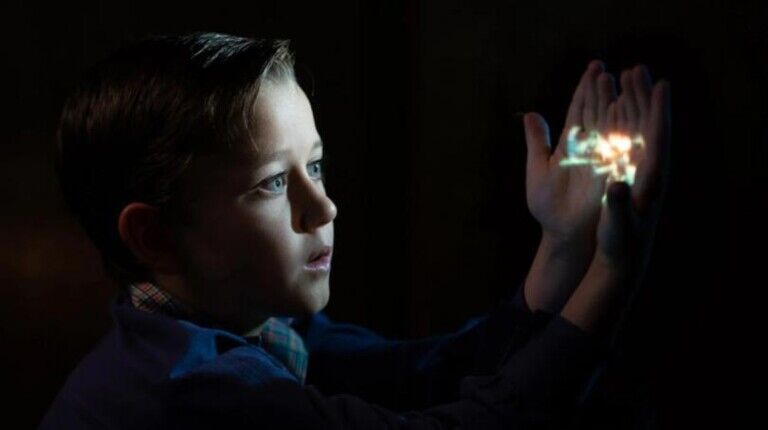by Celia Reyer
Immersive storytelling is no longer confined to a single discipline. It is not the sole domain of curators interpreting collections, nor of writers crafting screenplays, nor of designers translating themes into physical form. Instead, it represents a new industry where these traditions intersect, demanding hybrid expertise that can orchestrate story, space, and technology into experiences that leave lasting emotional impact.
The opportunity now lies in shaping projects that build on what cinema offers in legacy of emotional resonance, where visual, sonic, and narrative elements penetrate deeply into memory, and then extend those feelings into physical space where audiences can step into new places and times.
Immersive storytelling
We are, at heart, world builders. From childhood play to the ways we interpret stories in museums or cinema, imagination shapes the places where we escape, connect, and remember.
Steven Spielberg illustrated this in The Fabelmans, transforming childhood toys, atmosphere, and early technical tools into the raw material of extraordinary storytelling. My own early experiments with found materials unfolded against a backdrop of stories set in history, faraway places, and imagined adventures.
Growing up within a progressive business mindset on one side and a deep appreciation for original design across centuries on the other, I learned to navigate both innovation and heritage. That foundation matured into a practice of creative direction and vision ideation across museums, film, and experiential environments.
For me, immersive storytelling is not just about spectacle. It’s about translating emotional resonance into forms that endure – moments of longing, recognition, or awe that embed themselves in memory.
For decades, museums and cinema carried the mantle of storytelling in distinct forms. Objects, labels, and curated authenticity anchored museums. Cinema created emotional landscapes through image, sound, and character.
Yet immersive experiences demand more than either discipline alone. A curator may hold knowledge but lack the tools of wayfinding and experience design. A screenwriter may craft a narrative but not understand how audiences move through space. Exhibition design firms often fill gaps, helping museums transform stories into environments. However, these approaches are limited when treated in isolation.
True impact requires integration, a blended practice where narrative and sensory orchestration converge.
Emotional impact storytelling
Immersive storytelling distinguishes itself through orchestration, uniting disciplines and technologies into experiences designed to imprint themselves on memory. This is sometimes described as narrative imprinting: the deliberate crafting of environments that extend the emotional power of cinema into lived space.
In Gladiator, Maximus brushing his hand across the wheat fields evokes longing, memory, and hope. In E.T., the meeting of fingertips becomes a simple gesture that carries connection and a promise of togetherness. These moments show how emotions first evoked in two dimensions can be deepened when carried into physical environments through light, sound, haptics, objects, and atmosphere.
A landmark example of imagination extending into another world came in 1964 with Mary Poppins, in the iconic scene where Mary, Bert, and the children step into Bert’s pavement chalk drawings and inhabit the world they have imagined.
In 1954, the television episode Walt Disney’s Disneyland presented models and plans for a new park. It previewed Fantasyland as a way to step inside stories such as Peter Pan and Alice in Wonderland. It documented a studio-led effort to translate screen worlds into physical environments, a move that continues to inform contemporary immersive practice.
Industry momentum and the creator opportunity
The commercial case for immersive experiences is now undeniable. Business intelligence firm Research and Markets reports the global immersive entertainment market was valued at US$133.6 billion in 2024, and is projected to grow to US$473.9 billion by 2030, reflecting a powerful underlying appetite for immersive narratives.
Studios and platforms are responding. Netflix has announced permanent Netflix House venues where fans can step into worlds like Stranger Things, calling them fandoms “coming to life.”
Paramount’s The Lodge activation invited visitors to “almost escape into the Paramount Mountain,” as VP James Stewart Cullen explains. Meanwhile, museums like the V&A have experimented with immersive projects like Curious Alice: The VR Experience. This longstanding and unique approach brought me to work there as a curator to blend engagement, learning, and imaginative play.
The production of experience
Immersive projects today require the same rigour as a film production: conceptual development, story architecture, design, technology integration, and audience delivery.
Unlike film or museum curation alone, these projects call for hybrid leadership, an ideation role capable of bridging institutions, brands, film, and immersive entertainment. This is the emerging professional landscape, an evolving industry in which each discipline contributes, but where vision holds them together to deliver unity and resonance.
Toward a new kind of world-building
The challenge now is authorship: getting it right. Immersive experiences thrive not solely through spectacle, but through unity, emotional depth, and purposeful design. They call for visionary collaboration – ideators who can guide story, design, and technology into experiences that resonate across disciplines and audiences.
Today, experience is no longer an object to view or a story to watch. It is a world we step into, one that shapes memory, sparks imagination, and deepens connection.
This is the promise of hybrid narrative design: creating experiences that anchor cultural value while driving commercial opportunity, designing worlds that impact us on our individual journeys and personal sensorial touchpoints, resonating far beyond the moment.
